Idea by
Johan Metzger
Call for ideas 2018
Palimpsest
Palimpsest

The idea draws its singularity in the meeting between the architectural work of Aldo Van Eyck and the philosophy of the Sanaa office.
The plant has an important place in the future of our urbanity because the densification of the cities will increase the proximity between each new construction.
The Palimpsest proposes to bend some walls by forming semicircular spaces around wells of vegetation and light. The sudden cuts in these walls transform this simple pattern into a complex spatial device that dialogues with vertical gardens.
These plant wells are connected by sliding wooden doors allowing the rooms to expand and contract with the wishes of the inhabitants. The idea: to abolish the boundaries between inside and outside. A challenge that is both aesthetic and technical. In its metabolism, the Palimpsest is intended as raw as innovative.
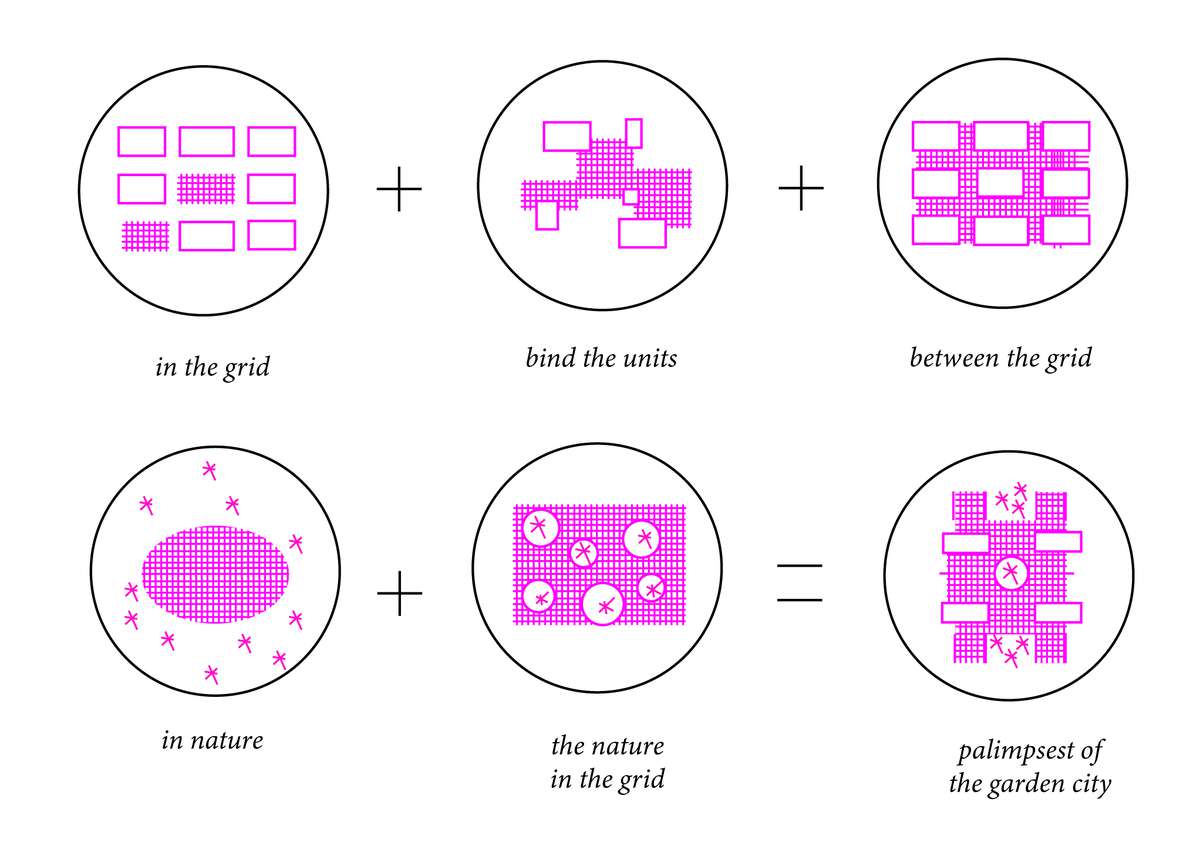
The composition exercise is based on five diagrams questioning the use of the frame in architecture, the porosity between inside and outside and the links of inclusion and exclusion.

The interior of the public space is composed of a large cook and book, which aims to bring together the inhabitants in a place that combines tradition and modernity.
Wide concrete sails invite light onto wooden floors up to the vegetation well. The respect of the fundamental elements, the air, the light, the water remains present.
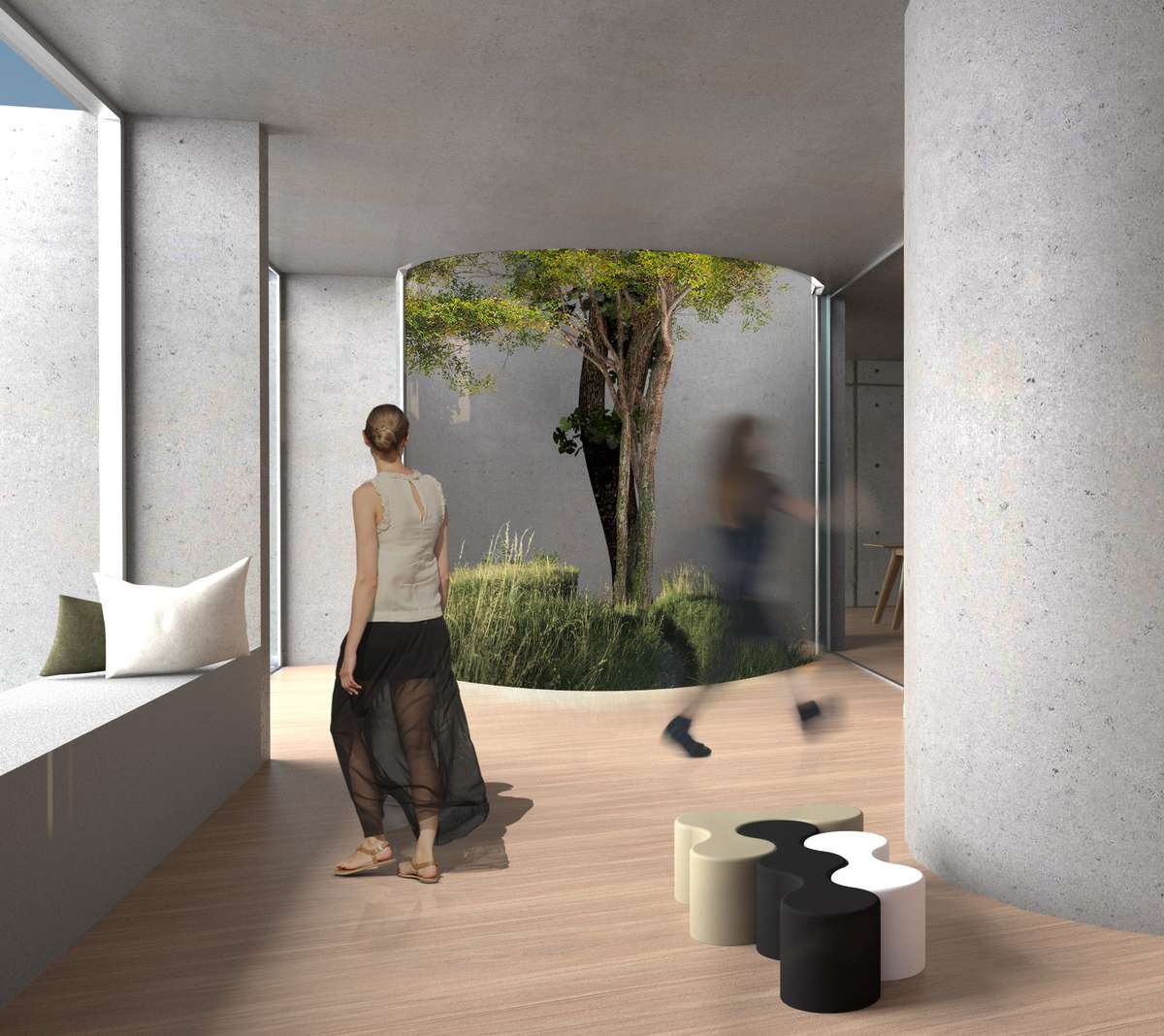
The housing deploys six typologies of housing, from the studio to the family apartments. All floors provide large communal spaces, accessible by individual homes via sliding wooden doors. The rooms can thus expand and contract with the wishes of the inhabitants.
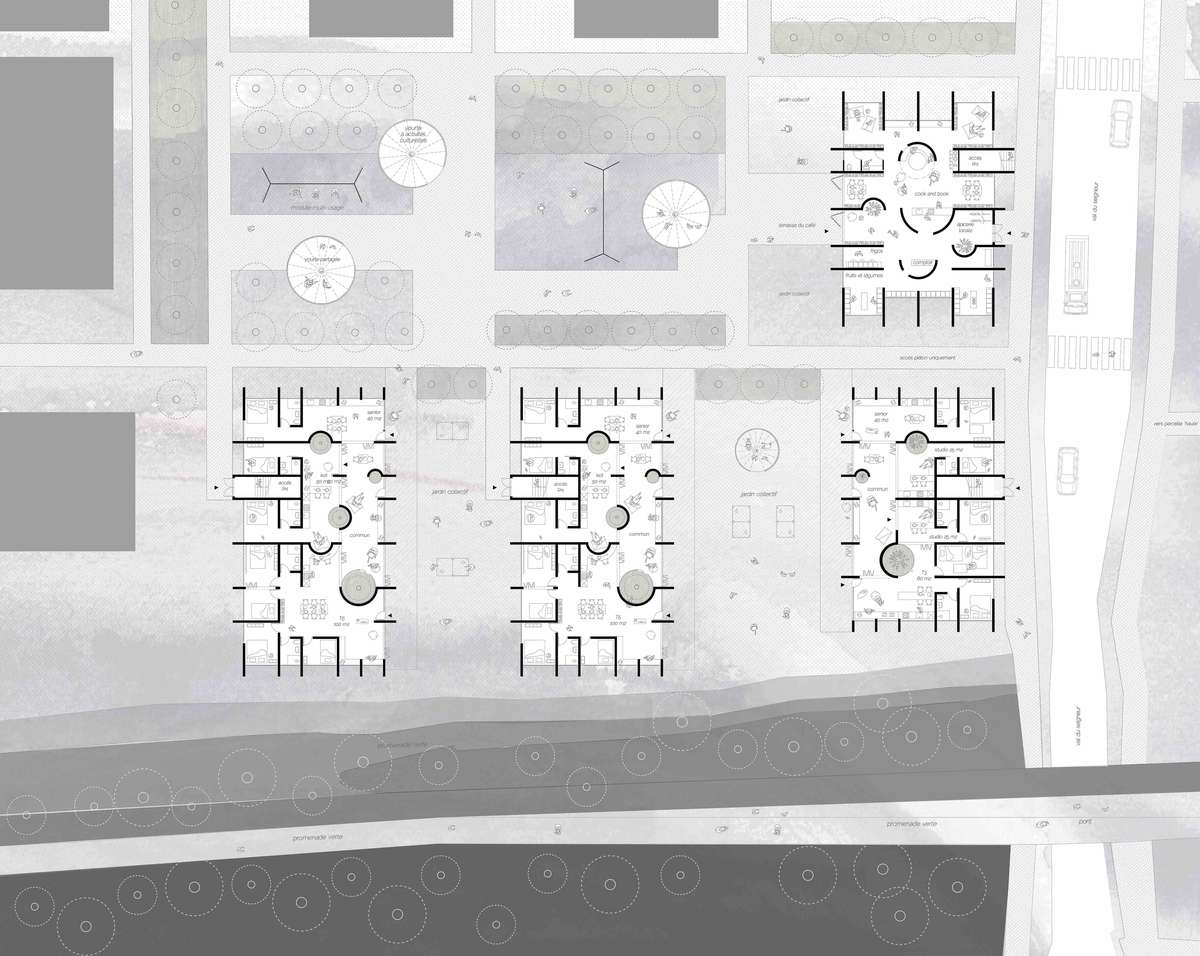
The ground floor plan demonstrates the use of vegetable pockets. The dwellings are surrounded by trees and extend on both sides to collective gardens. A public square is adjacent and comes alive with the installation of yurts and play modules.
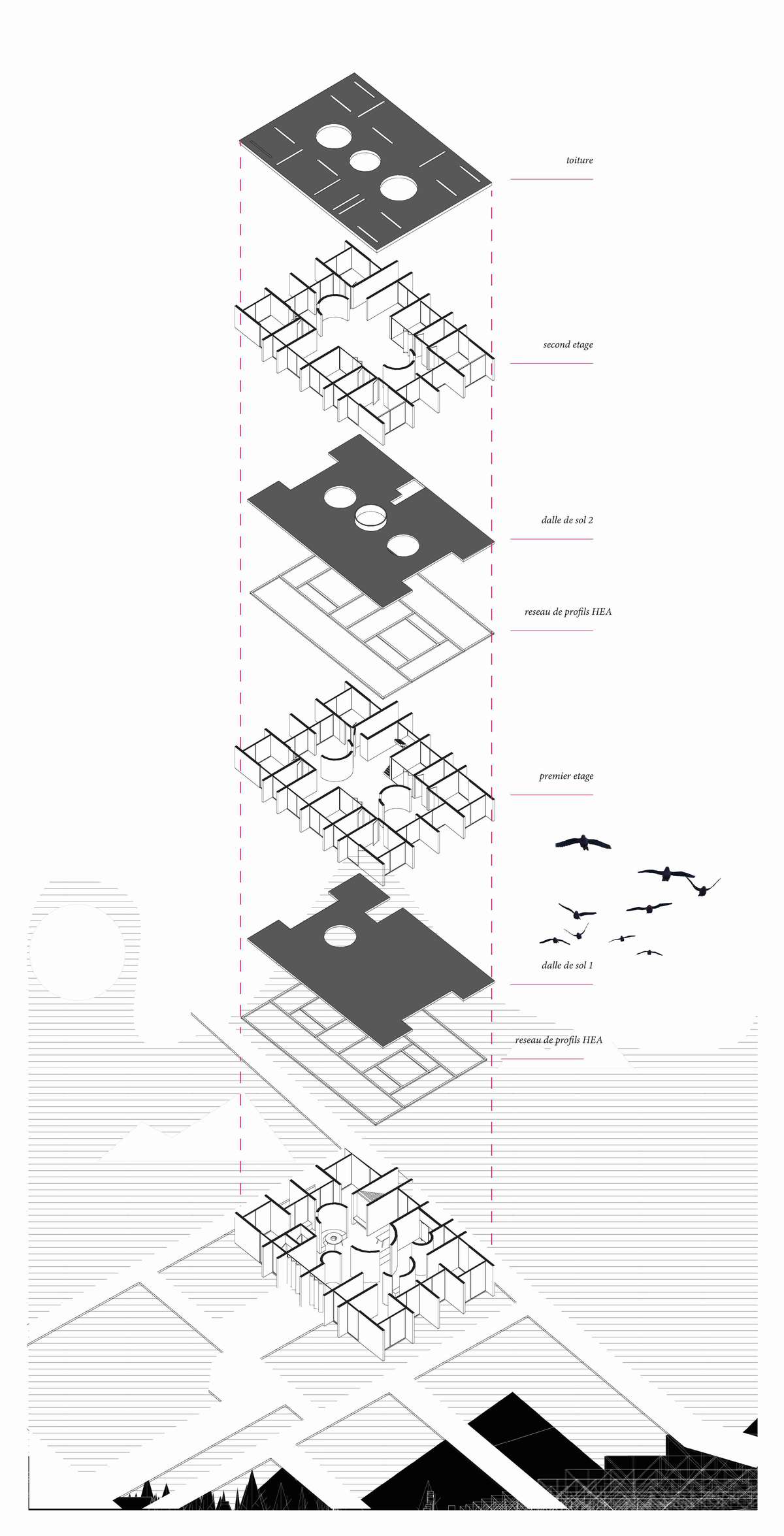
The axonometry of the building highlights the holes carved in the concrete floor slabs that bring the vertical light along the houses.
Palimpsest
Palimpsest

The idea draws its singularity in the meeting between the architectural work of Aldo Van Eyck and the philosophy of the Sanaa office.
The plant has an important place in the future of our urbanity because the densification of the cities will increase the proximity between each new construction.
The Palimpsest proposes to bend some walls by forming semicircular spaces around wells of vegetation and light. The sudden cuts in these walls transform this simple pattern into a complex spatial device that dialogues with vertical gardens.
These plant wells are connected by sliding wooden doors allowing the rooms to expand and contract with the wishes of the inhabitants. The idea: to abolish the boundaries between inside and outside. A challenge that is both aesthetic and technical. In its metabolism, the Palimpsest is intended as raw as innovative.
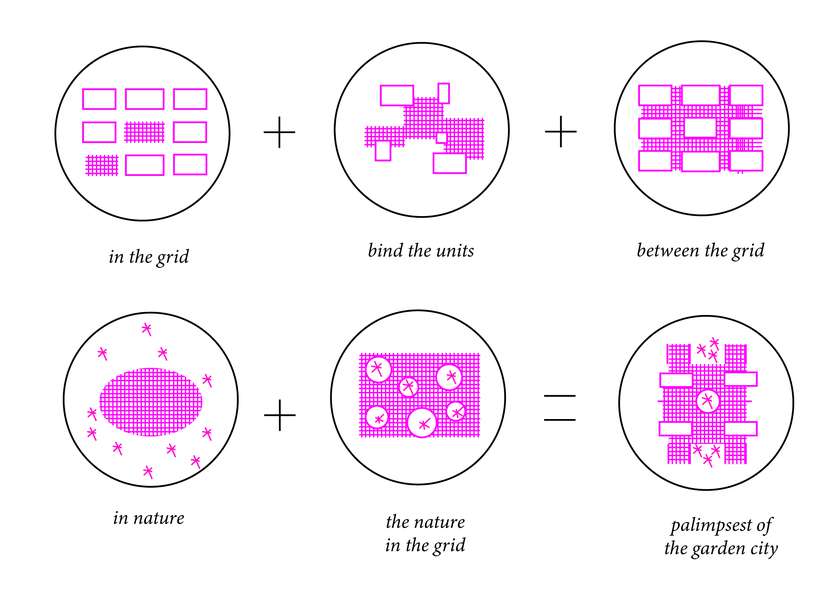
The composition exercise is based on five diagrams questioning the use of the frame in architecture, the porosity between inside and outside and the links of inclusion and exclusion.
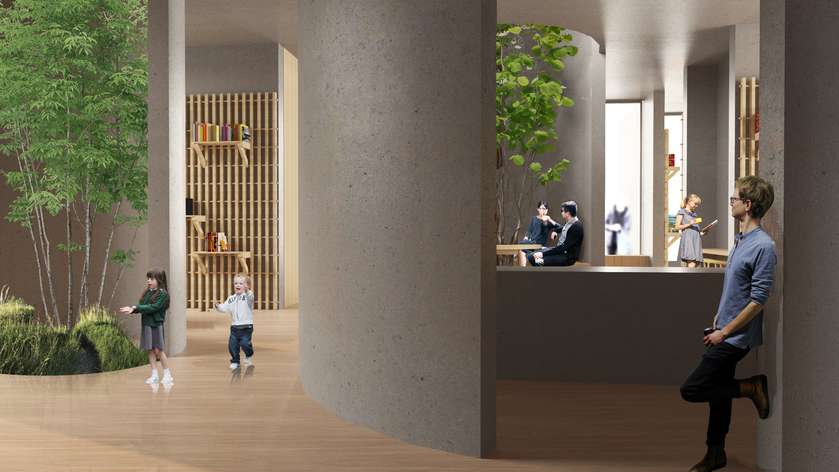
The interior of the public space is composed of a large cook and book, which aims to bring together the inhabitants in a place that combines tradition and modernity.
Wide concrete sails invite light onto wooden floors up to the vegetation well. The respect of the fundamental elements, the air, the light, the water remains present.
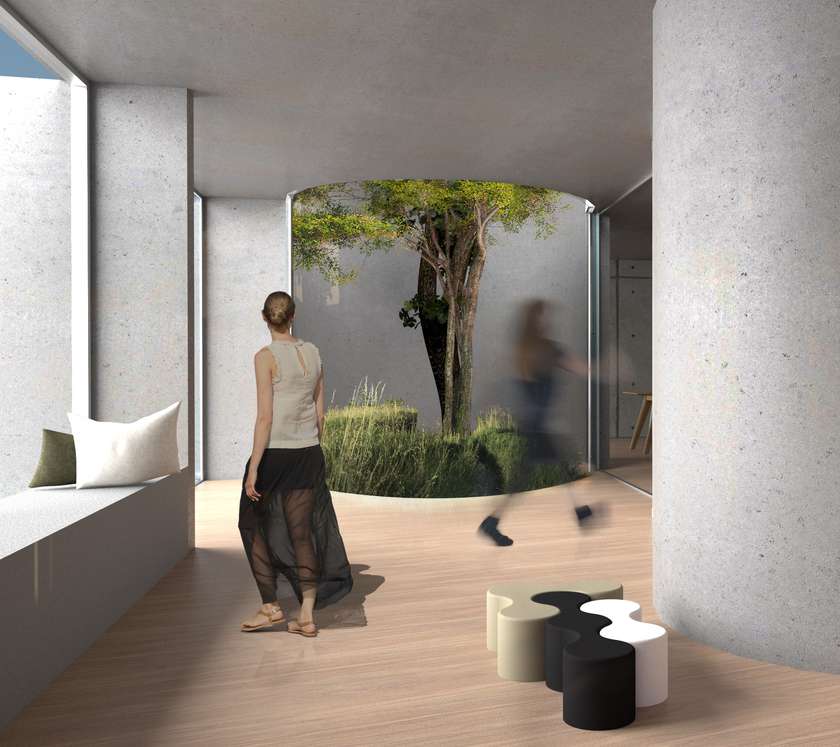
The housing deploys six typologies of housing, from the studio to the family apartments. All floors provide large communal spaces, accessible by individual homes via sliding wooden doors. The rooms can thus expand and contract with the wishes of the inhabitants.
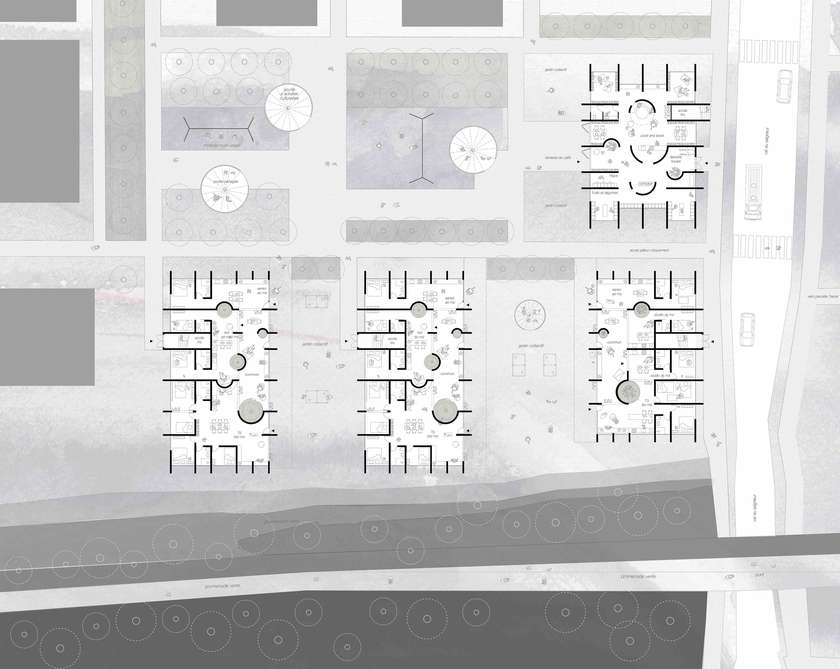
The ground floor plan demonstrates the use of vegetable pockets. The dwellings are surrounded by trees and extend on both sides to collective gardens. A public square is adjacent and comes alive with the installation of yurts and play modules.
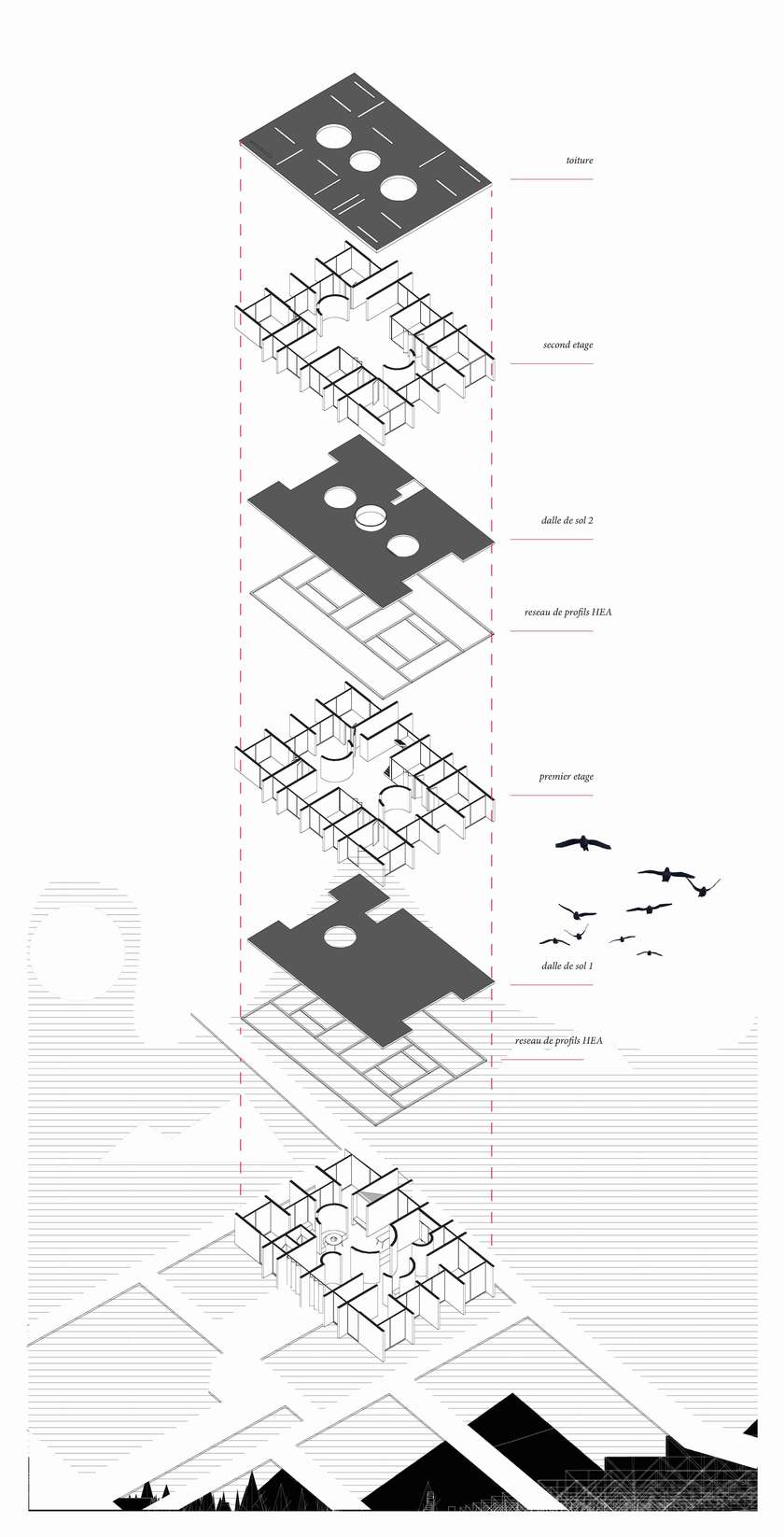
The axonometry of the building highlights the holes carved in the concrete floor slabs that bring the vertical light along the houses.